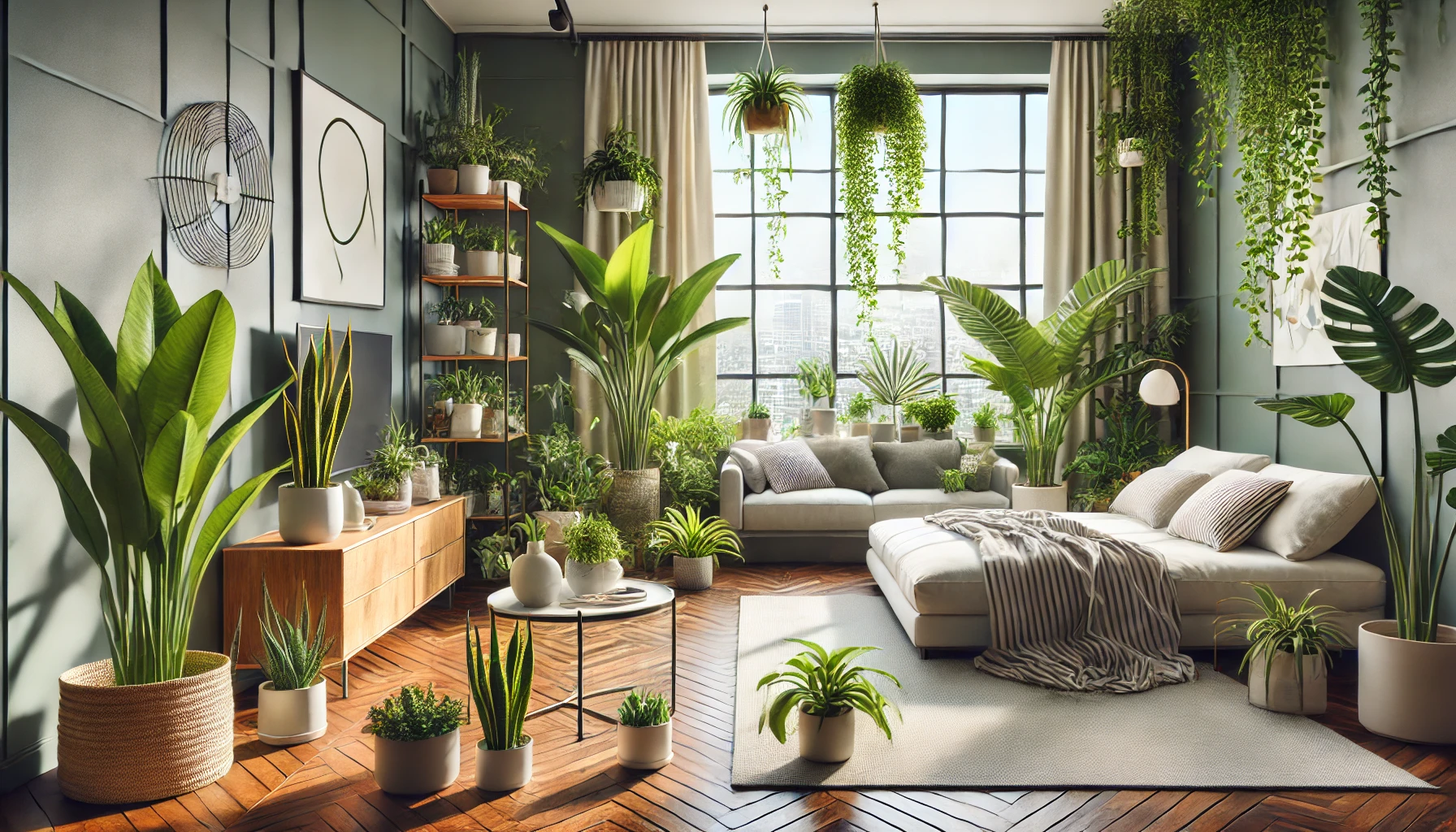Indoor air might seem clean — but in many homes, it’s filled with invisible pollutants. From cleaning products to furniture and even electronics, your living space can trap toxins that affect your health over time. The good news? Plants can help purify the air naturally, while also bringing peace, beauty, and a calming vibe into your home.
In this article, you’ll discover how plants support better indoor air, which species are most effective, and how to use them strategically throughout your space.
Why Indoor Air Quality Matters
We spend more than 80% of our time indoors. That means the air in your home has a major impact on your daily well-being. Poor air quality can lead to:
- Headaches or fatigue
- Dry skin and eyes
- Allergies and respiratory issues
- Trouble focusing or sleeping
Common indoor pollutants include:
- Volatile Organic Compounds (VOCs) from paints, glues, and furniture
- Formaldehyde from flooring, fabrics, and particleboard
- Benzene and toluene from smoke or solvents
- Carbon dioxide buildup from poor ventilation
- Dust and mold spores
That’s where plants come in.
How Plants Improve Indoor Air Quality
Plants improve air quality in several ways:
- Photosynthesis: They absorb carbon dioxide and release oxygen
- Transpiration: Plants release moisture into the air, improving humidity levels
- Absorption of pollutants: Certain plants absorb VOCs and chemicals through their leaves and roots
- Dust trapping: Leaves catch airborne particles and help settle them out of the air
While no plant replaces proper ventilation, studies (like NASA’s famous Clean Air Study) show that adding greenery to your home can reduce harmful toxins and create a healthier living environment.
The Best Plants for Cleaner Air
Here are some of the top air-purifying indoor plants — based on effectiveness, low maintenance, and adaptability:
1. Snake Plant (Sansevieria)
- Filters: Formaldehyde, benzene, trichloroethylene
- Releases oxygen at night
- Tolerates low light and neglect
2. Peace Lily (Spathiphyllum)
- Filters: Ammonia, benzene, formaldehyde
- Also improves humidity
- Needs low to medium light and moist soil
3. Areca Palm
- Filters: Toluene, xylene
- Excellent natural humidifier
- Prefers bright, indirect light
4. Spider Plant (Chlorophytum comosum)
- Filters: Carbon monoxide, formaldehyde
- Very beginner-friendly
- Fast-growing and great for hanging baskets
5. Pothos (Epipremnum aureum)
- Filters: Benzene, formaldehyde
- Very adaptable and easy to grow
- Trails beautifully from shelves or hanging planters
6. Rubber Plant (Ficus elastica)
- Filters: Toxins from synthetic materials
- Loves bright, indirect light
- Also adds dramatic, sculptural foliage
7. Bamboo Palm (Chamaedorea)
- Filters: Benzene, trichloroethylene
- Adds moisture to dry rooms
- Safe for pets and great for living rooms
8. Boston Fern
- Filters: Formaldehyde and airborne mold
- Increases humidity naturally
- Prefers cool, humid spots with indirect light
9. Aloe Vera
- Filters: Formaldehyde, benzene
- Releases oxygen at night
- Requires minimal watering and lots of light
10. Dracaena (many varieties)
- Filters: Trichloroethylene, xylene
- Striking foliage in compact form
- Moderate light and humidity needs
How Many Plants Do You Need?
The NASA study suggests about one plant per 9–10 square meters (100 square feet) for a noticeable improvement in air quality. But even a few well-placed plants can make a difference in humidity, oxygen levels, and general atmosphere.
For a small apartment:
- 4 to 6 medium-sized plants is a great start
- Place them in rooms where you spend the most time: bedroom, living room, office
Best Spots to Place Air-Purifying Plants
Living Room
- Corners near furniture (e.g., rubber plant or bamboo palm)
- Coffee tables or shelves (pothos or peace lily)
- Hanging planters in windows
Bedroom
- Snake plant or aloe vera near your bed
- Spider plant on a nightstand
- Peace lily for calm energy and better humidity
Bathroom
- Boston fern or pothos for humidity-loving spots
- Wall shelves with trailing plants
- Small ZZ plant or philodendron on the sink area
Home Office
- Desk companion: small rubber plant or peace lily
- Floor space: tall dracaena or parlor palm
- Improves focus and reduces CO₂ buildup in long work sessions
Care Tips for Air-Cleaning Plants
To get the most benefit, your plants need to be healthy:
- Wipe leaves regularly to remove dust (which reduces their filtering ability)
- Water appropriately — not too much, not too little
- Provide proper lighting for each species
- Repot annually or as needed to refresh soil and root space
- Avoid leaf shine sprays, which can clog pores (stomata)
Healthier plants = more efficient air cleaning.
Bonus: Humidity and Comfort
In dry climates or air-conditioned spaces, houseplants also increase humidity through a process called transpiration. This:
- Helps reduce dry skin and irritated sinuses
- Protects wooden furniture from cracking
- Makes indoor spaces feel fresher and more comfortable
Plants like ferns, palms, and peace lilies are especially good at adding moisture to the air.
Final Thoughts: Breathe Easier, Live Greener
Adding plants to your home isn’t just about decoration — it’s about well-being. From filtering toxins to boosting oxygen and balancing humidity, the right plants can turn your space into a sanctuary.
Start with a few of the air-cleaning champions above, place them thoughtfully, and take the time to care for them. You’ll not only notice the visual difference — but over time, you’ll likely feel better, sleep deeper, and breathe a little easier.
Your plants are working for you — even while you rest.
